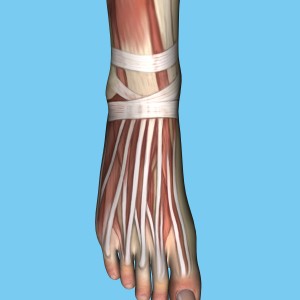Foot Drop Deformity in Patients with Friedreich’s Ataxia Treated by PTT

 Friedreich’s ataxia patients are at a risk of developing foot drop deformity, or the loss of dorsiflexion and eversion (up-and-down movement), in the ankle joint. A clinical trial sponsored by Royal National Orthopedic Hospital NHS Trust in London is seeking to test head-to-head two methods of treating foot drop deformity in patients with Friedreich’s ataxia and other conditions.
Friedreich’s ataxia patients are at a risk of developing foot drop deformity, or the loss of dorsiflexion and eversion (up-and-down movement), in the ankle joint. A clinical trial sponsored by Royal National Orthopedic Hospital NHS Trust in London is seeking to test head-to-head two methods of treating foot drop deformity in patients with Friedreich’s ataxia and other conditions.
Currently, the best means of treatment involves transposing the posterior tibialis tendon (PTT), but anterior transposition of the PTT can be accomplished through two techniques: through the interosseous route or through the extramembranous route. “Extramembranous and Interosseous Technique of Tibialis Posterior Tendon Transfer” will compare these two methods to answer the question of “whether one method has any superior outcome over the other.”
In practice, surgeons choose which method to use based on preference and patient factors. In this study, patients with foot drop deformity will be randomized into one of two groups–intramembranous route or extramembranous route.
Primarily, the researchers are interested in the functional and clinical outcome of either treatment after six and twelve months of healing, and they will evaluate this using the Stanmore score, which is specific for evaluating tendon transfer in foot drop. Although the Stanmore score is not validated as an outcome measure, a secondary aim is to validate this score in a separate study.
Visual analogue scale foot and ankle score and the EQ-5D health questionnaire will be used as additional criteria for determining which, if either, method is superior in outcome. Finally, dynamic and static foot pressure will be measured using a foot pressure scanner.
By July 2017, 52 patients are expected to be treated. The study is unique in that no previous studies have compared clinical and function outcomes of intramembranous and extramembranous PTT. “This study is of great interest to health care professionals managing foot drop both in developing and developed world,” wrote the researchers. “The answer to our research question–whether one surgical technique has better clinical, functional and quality of life over the other–will greatly impact the future surgical management of foot drop.”
Some of the treated patients may be affected by Friedreich’s ataxia or other conditions related to the onset of foot drop deformity, and it will be interesting to determine if one condition is better served by one method of PTT.






